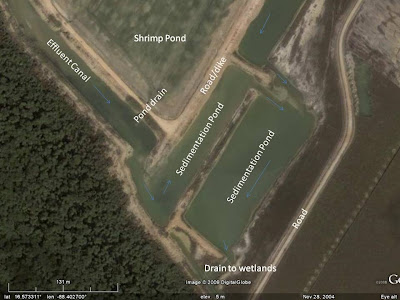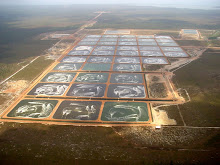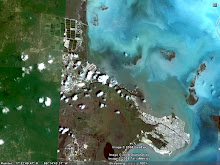
Water carrying high levels of nutrient from the shrimp pond (upper middle) is released through a drainage structure into an effluent canal. The effluent canal carries the water to sedimentation ponds where some of the nutrient settles out to the bottom of the pond, enters the food chain or is released into the atmosphere through de-nitrification. During the final step of treatment, the water flows from the sedimentation pond into a natural wetland mostly full of red mangrove. After that, it then enters a tidal creek and then flows to the sea where it eventually dilutes to become equivalent to background levels. The size of these canals varies. They are usually longer than a kilomter from 2 to 50 meters wide with a depth from 1.8 meters to less than one meter in depth.
The overall short-term goal is to reduce the amount of nutrient (primarily nitrogen and phosphorus in all forms) exiting the sedimentation pond and entering the natural wetland.
The Inventors Club project will be to design a substrate that can be placed in these effluent canals, colonized by algae, biofilms and biofouling organisms, and then stripped to feed the shrimp growing in the ponds nearby.




Hello!
ReplyDeleteDo you think you could come in this Friday at 11:35-12:15, our lunch time?
-Elizabeth
Hi Elizabeth. Sure! I'll be there.
ReplyDeleteGreat! Thank you.
ReplyDeleteI actually just found out that I won't be there on Friday, which is terrible (but I have to go to a funeral, so...), but I will leave an agenda and have someone take notes to fill me in. The rest of the people in the club are a little hazy on what the exact plan is. Some of them did not get the blog invitation.
So sorry about the funeral, Elizabeth.
ReplyDeleteThe blog invitations went out to list you gave me. I'm not sure what the hold-up is, but we can figure it out tomorrow. I listed everyone as "authors" so they should be able to post.
I need to know where to meet the group on Friday.
Ok. David and I have corresponded and it appears the first meeting will be post-poned until early February.
ReplyDeleteIn the meantime, we'll get the rest of the club signed up, some wider involvement at Uni, the Independence High School group in the loop.
We have a great system using salt marsh plant Salicornia - see http://www.llyn-aquaculture.co.uk/index.php?p=111
ReplyDeleteREgards,
Mark Rigby. Llyn Aquaculture UK